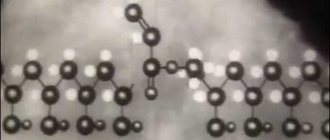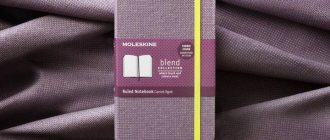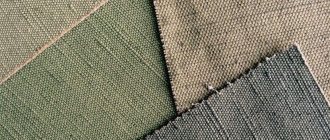Chrysotile asbestos or “white asbestos” is classified as one of the group of natural minerals bearing the commercial name “asbestos”. It is part of the serpentine group, and structurally belongs to layered silicates. Chrysotile asbestos has the formula 3MgO 2SiO2 2H2O, being a magnesium hydrosilicate found in nature in the form of a crystal consisting of hollow fibril tubes with a diameter of 2.6 10⁻⁵mm and a length of up to 2-3 cm. The mineral is capable of splitting into the finest chrysotile fibers, up to 0.5 microns thick.
Features of the material
The properties of different types of asbestos may differ, this also applies to the thickness and length of the fibers, but in general the material has the following features:
- High tensile strength, elasticity. It has amazing tensile strength, the figure exceeds even the level of steel - up to 30,000 kgf/cm2;
- Low thermal conductivity. Asbestos is also resistant to high temperatures and only melts when exposed above 1550 degrees;
- Resistant to chemicals. Resists well to alkalis, acids and other corrosive compounds.
According to the classification, asbestos minerals belong to hydrous silicates, and the fibrous structure is most pronounced in chrysotile asbestos - for these properties it is most widespread.
The structure of chrysotile asbestos looks like twisted nodular fibers that are arranged in waves. Short fibers are not as strong as long fibers.
How to replace asbestos
Now there is a huge selection of materials that have the same properties and are well suited for replacement.
Insulation in a roll
He makes three types of mineral wool:
- Basalt wool
- Glass wool
- Slag
Each type is suitable for certain types of work. In accordance with the instructions, select exactly the analogue that you need.
Basalt insulation 5 mm 5 m²
1 358
Buy
This building material is heat resistant and retains heat well.
Foam glass
This material is lightweight, durable, fire resistant and waterproof. It provides not only thermal insulation, but also has the ability to muffle sound.
Fire-resistant drywall (GKLO)
If it is necessary to insulate the wall in the bathhouse, which is located near the stove, you can use gypsum plasterboard. This fire-resistant material can also withstand high temperatures and does not emit harmful substances when heated.
Fireproof plasterboard 12.5 mm
442
Buy
Minerite
Minerite is also produced specifically for the construction of baths. It is installed between the stove and wooden walls. It can withstand about 650 degrees and does not burn or rot.
Types of material
Asbestos can be serpentine and amphibole. The first type has a whole set of positive properties: it does not burn in fire, is elastic and very strong. The indicators of the second type are more modest; it is mainly used where the ability to withstand the destructive effects of acids is required, that is, in the chemical industry. Serpentine asbestos is also less harmful to health than amphibole asbestos.
Since only chrysotile asbestos belongs to the serpentine group, you can sometimes find it mentioned as a separate species. As for amphibole, in this case the diversity is greater. Such minerals include amosite, crocidolite, anthophyllite, actinolite, and tremolite.
Asbestos has different colors, which is also reflected in their name. Chrysotile is called white, crocidolite is also called blue asbestos, and the mineral amosite has a brown tint.
Chrysotile asbestos is divided into several groups, depending on the fractional composition of the existing fibers. Separation occurs using a special device and a sieve with cells of different sizes. According to fractions, the material is divided into seven groups, among which the sixth is most often used.
Asbestos is
Asbestos (from the Greek: inextinguishable) is a group of fine-fiber minerals from the silicate class, which has been known to people since ancient times.
What is asbestos called?
Note: Asbestos is also called “mountain flax” due to its external resemblance to this plant.
Asbestos: classification
Depending on the direction of the fibers, the mineral can be:
- parallel-fibrous;
- matted fibrous.
Asbestos mining
The mineral is mined by open-pit mining. Asbestos is mined in Russia, Canada, USA, China, Brazil and some other countries.
Green asbestos
Note: It is worth noting that depending on the deposit, asbestos can be of different types and colors. Thus, in Altai a golden mineral is often found, and in the Urals the material is usually greenish in color.
Types of asbestos
There are two types of this mineral:
- chrysotile asbestos is a multilayer silicate that is resistant to alkalis, but is destroyed by acid. This type of asbestos is very common in Russia and the CIS countries;
What does chrysotile asbestos look like?
- amphibole asbestos (crocidolite, tremolite, etc.) – the quality is significantly inferior to chrysotile asbestos, but, at the same time, is resistant to acids.
What does amphibole asbestos look like?
It is important to know: Types of asbestos differ from each other not only in composition, structure and color, but also in their effect on the human body.
Scope of application
Since asbestos has a large number of irreplaceable properties, it has found application in a variety of areas:
- This material is included in protective suits for representatives of professions involving risk, such as firefighters. You can also find fibers in special paper products, including the production of special asbestos cardboard, which is distinguished by its strength. It is intended for filtering liquid media;
- Many building materials contain asbestos, and it is impossible to do without its use in the production of slate and various pipes;
- This mineral has also been noted in the automotive industry - it is used to create brake pads, gaskets, clutches, discs and other spare parts;
- The production of asphalt also cannot be done without asbestos - it is necessary when laying the asphalt road surface;
- Due to its low thermal conductivity, asbestos can provide good protection from high temperatures, therefore it is used to insulate various heating devices;
- In addition to industrial applications, asbestos products are often used as accessories for a fire show - a spectacular performance using fire.
Where is it used
If you study the question of what asbestos is needed for, you will notice that it is used in various fields, including industrial production and construction.
Construction
Unsplash
In installation work, its fire resistance and thermal insulation are especially valued. Therefore, very often when installing wall panels or laying floors, asbestos boards or wool made from the same substance are used.
Mechanical engineering and metallurgy
Cables and various metal and concrete structures are usually treated with this mineral in the form of spraying. This is how they acquire fire-resistant properties.
In addition, in some houses, cement pipes with the addition of this substance are installed. It is thanks to him that they become stronger and more durable.
Chemical industry
Asbestos has also found application in the chemical field, where it is used to make various plastics, paper and paint and varnish products.
Textile industry
Here this mineral is used in the manufacture of fabrics for workwear. It is used to make protective gloves, helmets and suits. In addition, brake flanges and pipe seals are also made with its addition.
- Construction Materials
7 harmful building materials that should not be in your home
Production Features
Of all types of asbestos, chrysotile is the one that is most mined and in demand - approximately 95% of asbestos produced worldwide is of this type. The largest deposits are located in Russia, for this reason the country is the world's largest producer, which supplies materials to other countries.
The technological process consists of the extraction of asbestos ore and its enrichment. The material obtained from the subsoil of the mountain is supplied to the plant, where production is fully automated. A special device separates asbestos into fibers. Ore beneficiation is carried out using the dry gravity method. After separation into fractions and passing through all the necessary stages, the material is packaged and delivered from the plant to various facilities where its use is required. More than a third of all asbestos batches received in Russian production are used for the production of asbestos-cement products.
Our company produces asbestos, so you can purchase it from us by ordering the required amount of material. Here you can find different types of products and buy asbestos chips for use in industrial needs.
Packaging, transportation, storage
Usually the material is packaged in bags made of strong paper or synthetics. The weight of one bag can be 40, 45 or 50 kg. For example, chrysotile asbestos grade A-6K-30, the bag weight of which is 50 kg. It can be transported using any type of transport: by car, train, plane or ship. However, it is important to fully comply with the loading and unloading conditions. Also, while moving, it is necessary to carefully secure the load so that it is completely stationary.
The substance must be stored in packaged form so that the beneficial properties do not disappear. It is also advisable to use a closed room as a storage location. If this option is not available, then in an open area the material should be kept packed in synthetic bags and covered with a waterproof cloth on top. Asbestos can be stored in this form, but not for more than a year.
TOP 5 chrysotile asbestos products
- Slate and flat sheets One of the most affordable and widespread materials. Slate and flat sheets made of chrysotile cement are environmentally friendly, do not burn, retain their properties for decades and are resistant to the most aggressive environments.
- Chrysotile cement pipes are used for the installation of pressure and non-pressure water supply systems, ventilation air ducts, telephone and cable communication channels.
- Asbestos sheet is an effective fire extinguishing agent. It is actively used in sewing fire-resistant clothing and is used as a heat-insulating and cushioning material.
- Mineral additives Thanks to its unique physicochemical properties, chrysotile asbestos makes it possible to improve the characteristics of other substances. Today, mineral additives based on chrysotile are actively used in road construction.
- Brake pads The strength and wear resistance of the mineral allows it to be used to produce effective brake pads for passenger cars, industrial equipment and even public transport.
Asbestos. Review.
Asbestos is a general term given to a group of minerals whose crystals have a fibrous structure. The term "asbestos" was adopted for commercial designation purposes only.
The six minerals that are generally considered to be asbestos come from two groups of minerals known as: -serpentine (chrysotile or white asbestos) and -amphiboles (amosite or brown asbestos; crocidolite or blue asbestos; anthophyllite, tremolite and actinolite).
The effect of different types of asbestos on the human body is different. The greatest danger was represented by amphiboles (amosite, crocidolite, anthophyllite, tremolite). Currently, the extraction and use of this type of asbestos is prohibited throughout the world.
Chrysotile asbestos poses the least danger, even in comparison with artificial substitutes and natural fibers (cellulose), since it is removed from the lungs faster than other fibers.
Currently, the only type of asbestos widely used on the world market is chrysotile.
GOST 12871-93 Chrysotile asbestos.
Chrysotile asbestos (3MgO 2SiO2 2H2O) is a hydrous magnesium silicate, chemically similar to the well-known mineral talc (3MgO 4SiO2 H20), i.e. from a chemical point of view, it is absolutely harmless to the body. Chrysotile asbestos crystals have an unusual structure: they are the thinnest hollow fibril tubes with a diameter of 2.6·10-5 mm and a length of up to 2...3 cm. Such crystals resemble soft cellulose fibers of cotton wool. At the same time, being an inorganic material, chrysotile asbestos fibers do not burn and can withstand high temperatures. Only when heated to 700°C do they lose chemically bound water and become brittle. Chrysotile melts at a temperature of about 1500°C.
Translated from Greek, “asbestos” means “inexhaustible,” “unquenchable,” “unrelenting.” Its other name sounds like “mountain flax”. The meaning of this name is that asbestos is capable of splitting into the thinnest long fibers up to 0.5 microns thick. The Greek name apparently characterizes the natural property of asbestos to withstand high temperatures.
Chrysotile asbestos, depending on the length of the fibers, is divided into 8 grades. The first three grades of asbestos are considered long-fiber and are classified as textile grades, while the last five grades are short-fiber and are called construction grades.
Depending on the texture (degree of preservation of fiber aggregates), asbestos is divided into: - hard (H), in which needles predominate; — semi-rigid (P) — with an equal number of needles and fluffy fiber; - soft (M) - with a predominant amount of fluffy fiber.
Chrysotile asbestos has high tensile strength along the fiber axis. Asbestos fibers are the most durable when carefully separated from lump asbestos. Depending on the elasticity of the fiber, three types of chrysotile asbestos are distinguished: - normal, - semi-brittle, - brittle.
This division is obviously arbitrary, since in reality it is impossible to draw boundaries separating one variety from another.
Rock containing asbestos is mined by open-pit mining and processed in asbestos factories to extract chrysotile asbestos. Commercial chrysotile asbestos consists of a mixture of fibers of various lengths and aggregates.
Asbestos aggregates with undeformed fibers larger than 2 mm in diameter are called lump asbestos, and those less than 2 mm are called needles. Fluffed asbestos is called asbestos, in which the fibers are thin, deformed and tangled. Particles of associated rock and asbestos fiber that have passed through a sieve with a clear mesh side size of 0.25 mm are called dust.
Based on the size of the fibers contained, there are 7 main groups of chrysotile asbestos with the following applications:
| Chrysotile asbestos 0, 1, 2 groups GOST 12871-93 | Production of textile and asbestos products: wicker packings, stuffing boxes, sealing linings, heat-resistant clothing, brake bands, filters, and others. |
| Chrysotile asbestos 3, 4 groups GOST 12871-93 | Production of pressure and non-pressure asbestos-cement pipes: for water supply systems, for sewerage systems, for the transportation of petroleum products, for the transportation of natural gas. |
| Chrysotile asbestos 5, 6 groups GOST 12871-93 | Production of asbestos-cement building materials: flat pressed sheets, corrugated pressed sheets, roofing panels, extruded wall panels, panels for building partitions, panels for building partitions. |
| Chrysotile asbestos groups 6K and 7 GOST 12871-93 | Production of heat-insulating materials and plastics. |
| Chrysotile asbestos special TU 21-22-28-89 | Production: pipes, adhesives, slate, diaphragms, paronite, plastics, thermal insulation, sound and noise-absorbing gaskets, gaskets for automobile engines. |
| Asbestos mixtures TU 21-22-20-95 | Production of slate and pipes. |
An important characteristic of asbestos is its elastic modulus. The average values of the elastic modulus of chrysotile asbestos range from 16x10 to 21x10 MPa.
The physico-chemical properties of chrysotile asbestos are determined by the following parameters: - Tensile density, MPa - more than 3000 - Density, g / cm3 - 2.4-2.6 - Melting point, °C - 1450-1500 - Friction coefficient, units. – 0.8 – pH 9.1-10.3 – Specific surface area, m2/g – 20











